In tales such as "The Call of Cthulhu" (1926) and "Nyarlathotep "(1920) Howard Phillips Lovecraft foresaw the crisis of Western civilization that we are witnessing today, a century later: from this point of view, the boundless sequence of horrendous crime reports, spy of a world in prey, should be framed to an incurable and pervasive anguish, in which the seasons have altered their natural cycle and in which wars and revolutions follow one another continuously, throwing humanity into a situation of apparently irreversible crisis, destined to lead, "when the stars have returned to the right position ”, in a“ New Dark Age ”.
di Miranda Gurzo
originally published in “Lovecraftian Studies” 17
cover: Bram Sels, "Cthulhu rises"
Artists, as individuals endowed with a particular sensitivity, are often able to anticipate events with astounding precision, beating many self-styled mystics and prophets of yesterday and today in predictive capabilities. Just think of Jonathan Swift, what about it Gulliver's Travels (1726) managed to predict the existence of two unknown satellites of Mars, which in the novel took the name of Phobos and Deimos, anticipating their discovery by 150 years. Another exemplary case is the unknown novel by Morgan Robertson Futility or the wreck of the Titan, which anticipated the sinking of the Titanic by 14 years, among other things with an incredible coincidence of details, including the cause of the disaster, an iceberg, and the time of the event (the month of April).
It is therefore not an exaggeration to say that Howard Phillips Lovecraft, pioneer and master of modern fantastic literature, has been able to predict with some precision the crisis of civilization, especially of Western civilization, which we are witnessing. Crisis that, even before being environmental, economic, political and social, is a crisis of founding values and meaning and whose effects we can evaluate by noting the ever-growing nihilism that seems to erode modern civilization at all levels, now founded only on finance and materialism which often, though not always, translates into a consumerism led to excess.
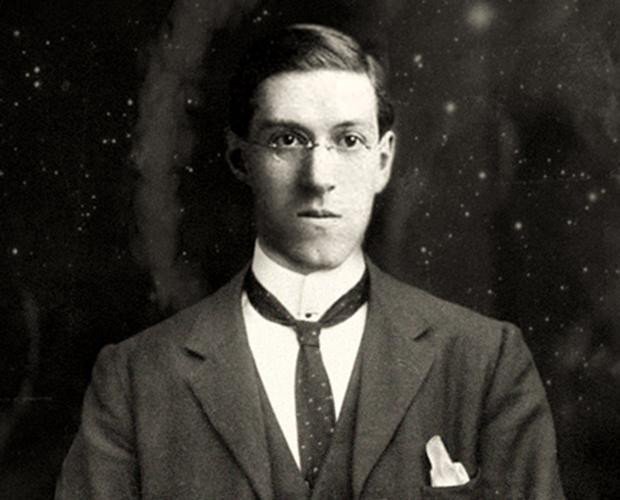
It took its first steps starting from the industrial age, but the gestation of this process of continuous erosion took place in even earlier periods, in the living rooms of the Enlightenment fin de siecle when the thinking minds of the time began to reject any approach to reality that was not mediated by reason, giving later ages a decidedly materialistic turn, since everything that had to do with ultra-sensitive realities, including the human soul, was since then considered a silly superstitious remnant of the childhood of our species. If humanity was to be freed of the heritage of the dark ages, it is also true that perhaps the child inside it threw himself with the bathwater, since the last two centuries have known as never before the anguish of the men. The same anguish emanating from a painting, the famous Scream by Munch, which not surprisingly was painted at the end of the nineteenth century (during Lovecraft's childhood), as if to foresee the horrors of the two world wars and the monstrous totalitarianisms that would shock humanity in the century to come.
Lovecraftian literature is full of apocalyptic suggestions, from the very beginning: in Dagon, from 1917 the unfortunate narrator, fresh from meeting the specimen of an unknown race of submarine monsters, fears
"The day when they come out of the waves and clasp in immense claws the remains of insignificant humanity worn out by wars ... the day the lands will sink and the dark bottom of the oceans will rise to the surface, in universal pandemonium »
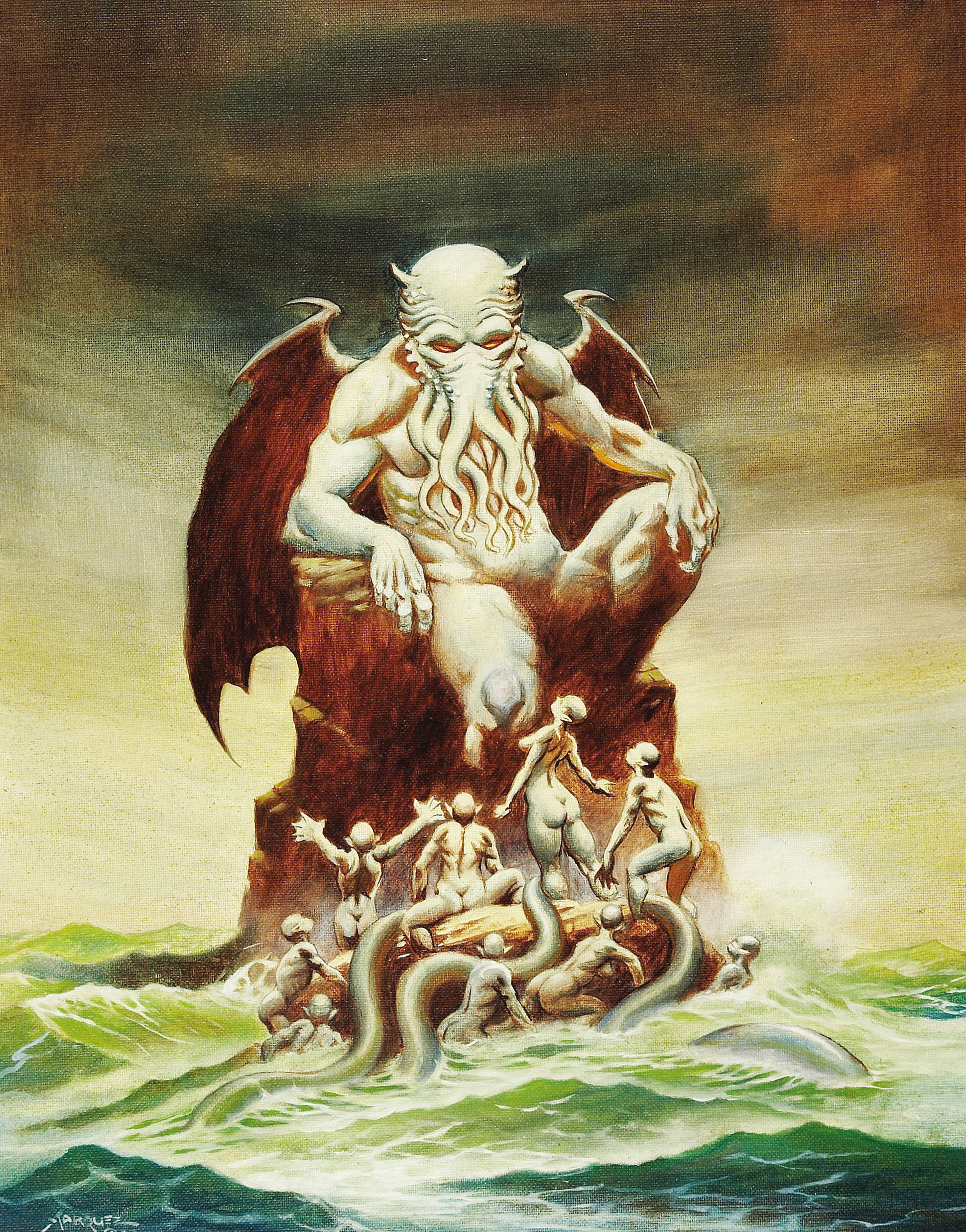
The short story anticipates themes that will be fully developed by Lovecraft nearly ten years later in The Call of Cthulhu, in which the madness that comes from the dark ocean floors is embodied in the titanic and looming figure of a frightening extraterrestrial entity awaiting in a sleep of death the terrible day of his resurrection; the theme of the reversal mentioned in Dagon is fully developed: once the stars are in the propitious position Cthulhu and his black hordes awaken and regain dominion over this planet that was theirs countless millions of years ago. It is not a question of the end of the world or of humanity, but rather of the rush of men towards a terrible age dominated by anarchy and the lowest instincts:
"It would have been easy to recognize that time, since by then humanity would have behaved like the Great Ancients: free and unrestrained, beyond good and evil, with laws and morals cast aside, it would have spent its time in swearing, killing and indulging in pleasure. The liberated Ancient Ones would teach man new blasphemies, new ways of killing and enjoying, and the whole earth would be burned in a holocaust of ecstasy and license »
Lovecraft wrote these words in 1926, when the era of "forbidden prohibition", of the unlimited diffusion of drugs, pornography and ostentatious "transgressive" behavior of common morality, if we want to call it that, was far from coming, as well as the endless succession of horrendous cases of today's crime news, which seem to be the most evident symptom of a lost and unrelated civilization.

The first and greatest prop of our weakness has perhaps failed under the ax of the Copernican revolution: humanity, always convinced that it is at the center of the universe, has lost once and for all the place of honor that it considered its own for acquired right. All the old certainties have therefore disappeared, and it is therefore not surprising that the Dreamer of Providence, an astronomer since his youth, described in his stories a cold, infinite and infinitely indifferent cosmos. If he lived in our day, his perspective could not possibly be very different, since the Einsteinian theory of relativity and quantum mechanics have given us the image of a cosmos governed by elusive laws and perhaps incomprehensible to us, perhaps even more alien and icy than that imagined by Lovecraft.
The total upheaval of laws and morals mentioned by the writer in The Call of Cthulhu it is undoubtedly the perfect counterpart to the utter lack of meaning that modern science seems to give as response to a humanity in search of meaning; on the other hand Lovecraft himself in the incipit of the story takes care to remind us that it is our ignorance of the negligible place we occupy in the universe as the only viaticum that protects us from the madness that would follow a clear understanding of things.
To share with the Great Cthulhu the predominant role in Lovecraftian eschatology is Nyarlathotep, the Creeping Chaos and Messenger of the Other Gods who rule over the weak and foolish earthly deities, and especially of Azathoth, the Chaos Idiot and leader in the hierarchy of the sinister Lovecraftian pantheon, as well as a demiurge devoid of intellect who from the center of the Whole presides over the creation of infinite universes that spring from his dreams, universes whose eternal laws originate from the dissonant and strident notes of the amorphous musicians who lull Azathoth, the Demon-Sultan, in his sleep of billions of years; perhaps a tragically distorted echo, the latter, of the Pythagorean Music of the Spheres, which according to the ancient philosopher was an expression of the Harmony that governs the cosmos. But the Lovecraftian one is an “acosmic” cosmos in the literal meaning of the term, it is devoid of order and is governed precisely by Chaos.
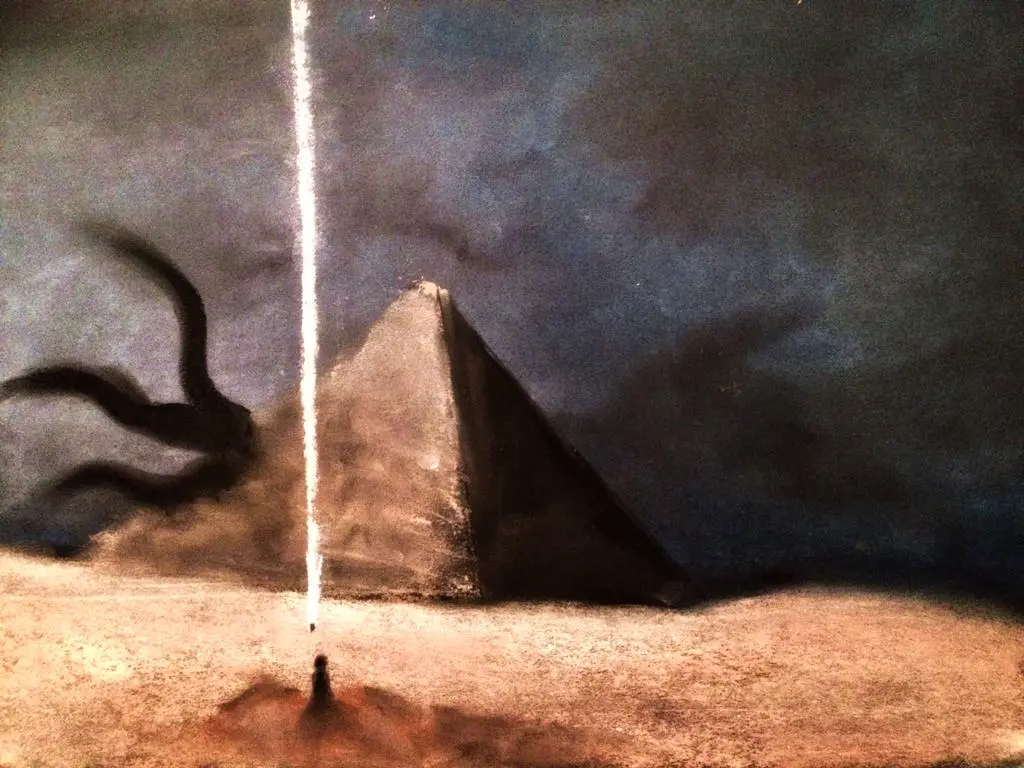
Nyarlathotep, ruthless bearer of Azathoth's decrees and herald of the End, is an enigmatic scientist and lecturer who is the protagonist of what Lovecraft called the worst nightmare of his life, which was then transcribed upon immediate awakening. Nyarlathotep makes his sudden appearance in a world prey to an incurable and pervasive anguish, whose seasons have altered their normal cycle, in whose sky mysterious atmospheric phenomena appear; rumors of wars and revolutions follow one another, throwing humanity into a situation of unsolvable crisis. It seems the portrait of our age, and if nothing else Lovecraft in 1920 managed to get closer to describing the contemporary age better than Fukuyama did who in the 90s predicted (wrongly) the so-called end of history, that is to say the resolution, with the disintegration of the USSR, of any international conflict or crisis, with the result of a long period of peace.
Nyarlathotep's first appearance occurs in Egypt, where he shows himself wrapped in red robes like the sunset and surrounded by tamed beasts. Thanks to his extraordinary charisma Nyarlathotep acquires international fame in a short time and his activity as a traveling lecturer takes him everywhere in the world; but where does it appear madness takes over and the cities are marred by the screams of nightmares. He discusses science and psychology, giving proof of unsuspected knowledge of physics by means of technological apparatuses created by himself, and also making use of projections of films of prophetic and eschatological flavor, which steal the soul of those who attend.
It seems to read an astonishing premonition of the astounding technological progress that has crept creeping into men's lives in recent decades, now perpetually connected to the network with results that in the worst cases border on alienation from the social consortium: just think of the so-called Hikikomori, from a Japanese term meaning "the lonely", often very young individuals who live their lives in perennial confinement , communicating with others only via the web.
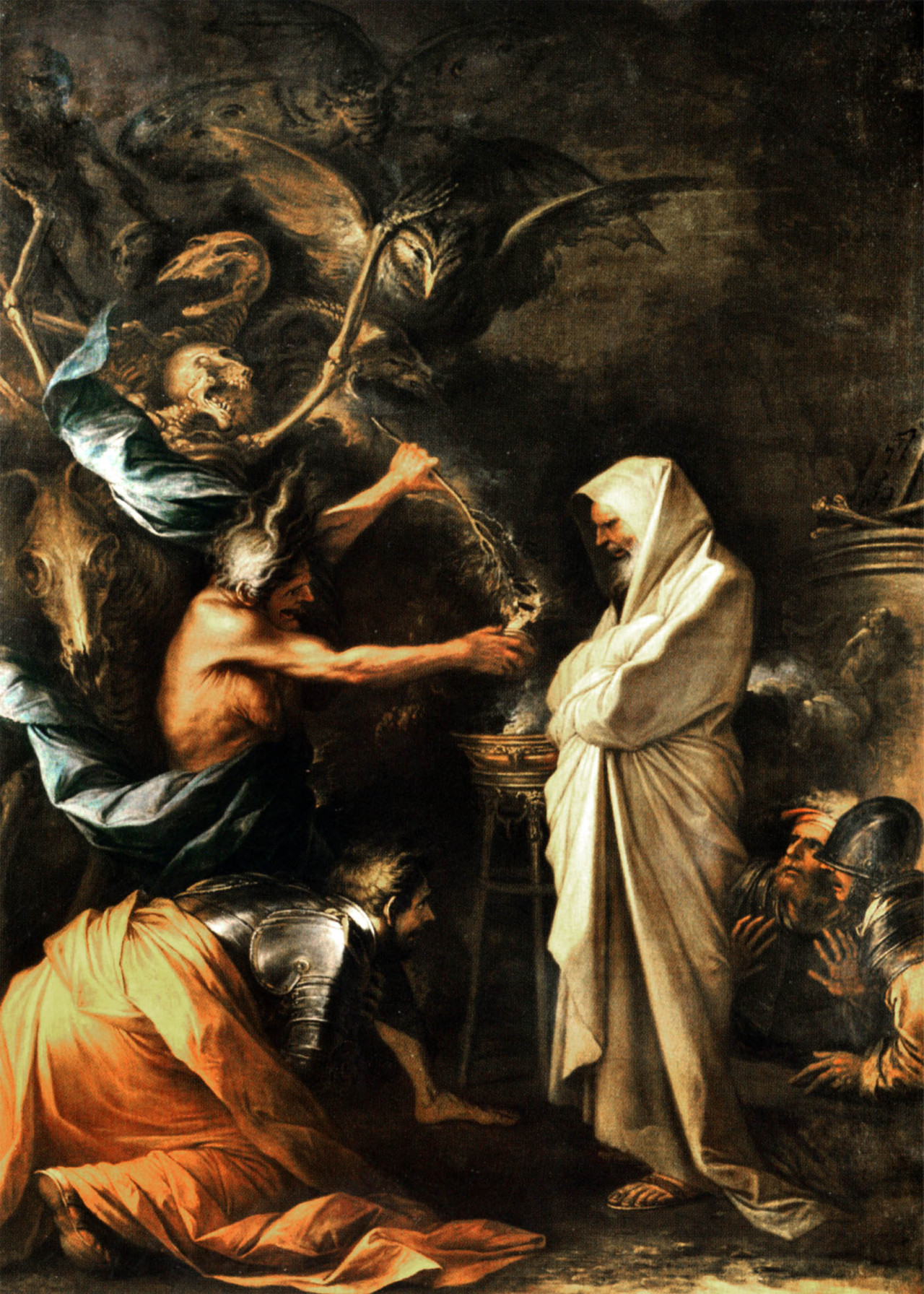
And a destiny of delirium and alienation awaits the anonymous protagonist of the short prose poem, who, shocked by the Nyarlathotep conference, realizes that the city is in ruins and loses contact with the other unfortunate victims of Creeping Chaos to finally get lost in a alien abyss where reason and meaning cease. In the sonnet of the same name Yuggoth mushrooms Lovecraft explains that this is the final term of our civilization: Azathoth the Demon-Sultan with a single breath sweeps away what he did, in the distant past, for fun or by chance.
Nyarlathotep is one of the most mentioned figures in Lovecraft's writings. In The Rats in the Wall we learn that he reigns mad and faceless in the caves in the center of the earth, screaming and accompanied by two amorphous and idiotic flutists. In The Dream Quest of the Unknown Kadath we find him as the main opponent of the protagonist Randolph Carter, who meets him in the guise of an ancient ruling pharaoh in the onyx castle on Mount Kadath, where he holds the pathetic hostage Gods of the Earth.
In The Whisperer in Darkness it is mentioned in the fragment of a ritual, in which it is stated that he will descend to earth from the world of the seven suns (the Pleiades?) assuming human form to pursue his mysterious and terrible ends. In The Dreams in the Witch House appears with the appearance ofBlack man of the witchcraft medieval sabbath, in which it is no coincidence that wild bacchanals were celebrated, in which every rule and morality are trampled, not unlike the rituals with which the Great Ancients are honored in Lovecraftian fiction.

It is possible that Cthulhu and Nyarlathotep are the Lovecraftian analogues of two archetypes of Christian eschatology, the Beast rising from the sea and the Beast rising from the earth, the antichrist and the false prophet. As with the two creatures mentioned in the book of Revelation, so the two Lovecraftian entities bring the world to ruin by proposing to the masses a deceptive philosophy that is absolutely split from any form of morality: the realm of the lowest instincts and their complete satisfaction. The emergence of the corpse city of R'lyeh and the monstrosities that lie there represent nothing other than the re-emergence of these ancient and feral instincts, no longer held back by reason and morality, by that mare magnum which is the collective unconscious.
Here then is the explanation of the infinite cases of news that seem dictated by madness, in which death is given or given to oneself for the most banal reasons. The primitive impulses that lie within man, no longer held back or inhibited, explode with unusual and unpredictable fury; health statistics also speak very clearly of a huge surge in the spread of mental illness in recent decades. According to many commentators, the Beast that rises from the sea is a nefarious ideology that will be served up to the masses through the Beast that rises from the earth, an individual who will act in the guise of a false prophet to propagate deception and madness.
If we want to draw a parallel with the two entities born from Lovecraft's fantasy we can assume that Nyarlathotep has a similar role, since by means of his own omniscience he is able to destroy the minds of men by subtracting meaning and purpose from their existence, with the complete moral inversion what follows; not for nothing both the sonnet and the prose poem bearing the name of Nyarlathotep speak of the emergence of lands covered with towers and obelisks concomitant with the first appearance of the Creeping Chaos, perhaps an allusion to the necropolis of R'lyeh where Cthulhu awaits the day of awakening.
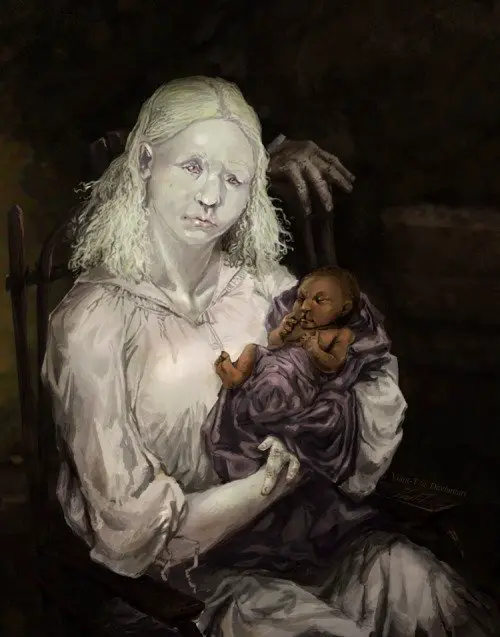
Anyone who should consider it implausible that Lovecraft was inspired, materialistic and agnostic as he was, by Christian themes, raising an absolutely plausible objection, must however reckon with the fact that at least two of Lovecraft's stories are a personal reinterpretation of biblical themes by the Providence dreamer. It is about The Color out of Space e The Dunwich Horror: according to various commentators, the first should have a lot to the story of Job, while the second is a Lovecraftian version of Christian Advent, in which the virginal whiteness of the Virgin is transformed into the albinism of Lavinia Whateley, mother of the son of the unmentionable God of Elsewhere, Yog-Sothoth.
Only history will be able to tell whether the fate predicted by Lovecraft for the human species will be fulfilled; what is certain is that the writer was firmly convinced that in the future the yellow race would supplant the western one. Lovecraft expressed this belief as early as 1920, hinting at it in his correspondence, and it is almost certain that he did not change his mind for the rest of his life, as we find scattered references in his narrative to the Chinese empire of Tsan Chan which will flourish in 5000 AD and his early works (in Beyond the Wall of Sleep for example) and in the last (in The Shadow out of Time).
In the story He, a short story from 1926, the mysterious character of the story shows an astonished protagonist a New York of the future in which the Chinese people have taken the place of the Western people, while the one in the prose poem Nyarlathotep to "evil and yellow faces" in the films projected by the diabolical lecturer is perhaps a more elliptical allusion but still no less important. China's recent acquisition of international weight from a geopolitical and economic point of view almost suggests that perhaps Tsan Chan's empire will not need to wait for a distant future to be realized.
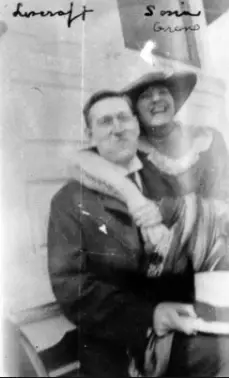
Although Lovecraft was beyond all doubt an exceptionally sensitive individual, a quality which certainly may have influenced his ability to anticipate events to come, it must be pointed out that he was never inclined to reject modernity in an a priori way; rather he totally rejected it only after having lived it to the fullest during his New York stay, during his brief marriage to Sonia Haft Greene. Lovecraft fully realized at that time that the dehumanizing nightmare that passes under the name of modernity is nothing more than a prison for a sensitive intellect like his: the thousand lights and cyclopean skyscrapers of the Big Apple, apparently bearing a thousand promises of success, turned out to be cold and ruthless urban landscapes crossed by shouting and nameless crowds, in a grotesque and chaotic caricature of civilization, in which there was no suitable location for him.
The New York of the twenties was perhaps for Lovecraft the equivalent in the tangible reality of what R'lyeh is in his stories: a cursed place where all the evils of the world are rooted. It was precisely the East Coast metropolis that spurred him to return to his native Providence and to re-embrace with more ardor than ever the conservatism of which he declared himself a proponent, certain that the tentacles of savage mercantilism they might have allowed him to evade the slow but inexorable advance of what was passed off as progress for a few decades.
Lovecraft was never a coward, he fully lived the weight of his choices, certain that it would not have been worthwhile to write cheap literature in exchange for a more conspicuous remuneration, as a never satisfied protester of the obtuse commercial mentality that he was. Among the greatest merits of him, and perhaps one of the reasons that see his literature more current than ever and widespread in the contemporary period: his farsightedness, which from what little he experienced of modern life allowed him to lift the veil a little of the real to see you the menacing silhouette of the spirit of the times that would prevail in the following decades.


7 comments on “"When the stars will be right": HP Lovecraft between prophecy and Apocalypse"